If you read about the Redwines, you might remember Nelda Redwine Hunt saying that the joke used to be that the Redwines, the Blacks, and Johnson Grass were going take over Bailey County. I wrote about the Redwines, then the Blacks, so now it seems only fair that I give Johnson grass its turn.
Johnson grass, or sometimes Johnsongrass, Sorghum halepense, is native to Asia, North Africa, and the Mediterranean. It now can be found on all continents except Antarctica. It was introduced in the U.S. around the 1800s and is named after Alabama plantation owner Colonel William Johnson who is said to have actually planted a crop of the grass on river bottom land in 1840. Turns out Johnson grass had been established in several other states about a decade earlier, having been considered a prospective forage crop or perhaps it accidentally contaminated a batch of seeds for some other plant, a seed-crop if you will.
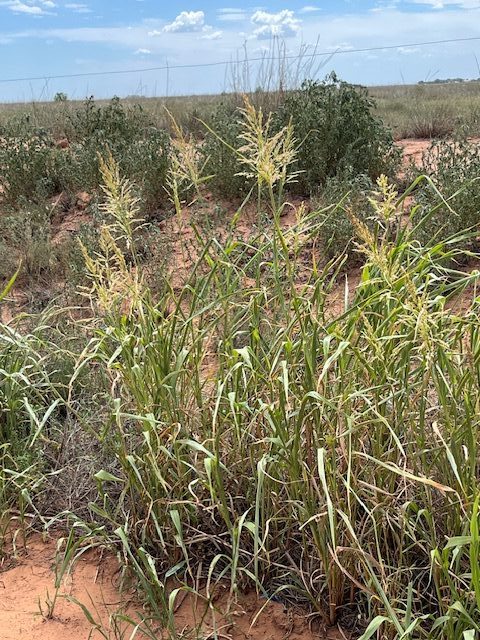
Johnson grass turns out to be an agricultural weed that can cause serious economic loss due to its invasive tendencies on cash crops and its ability to poison livestock. In fact, it is considered one of the ten worst weeds in the world, especially for range land.
What? A grass that was touted to be good for cattle grazing and hay is on the ten worst weeds list? Well. it’s invasive in cash crops because it is spread by its seeds and the rhizomes below ground. If the plant is simply plowed under, that just spreads more plants. If it is stressed by drought or freezing weather, it produces hydrogen cyanide (prussic acid) which will kill livestock when the grass is eaten in quantity. Ruminates are most susceptible, and the foliage can also cause bloat, but theoretically it can be grazed safely if it has not been stressed and produced the acid. Horses, on the other hand, probably shouldn’t eat it at all to be safe.
The most effective method for killing Johnson grass is spraying with glyphosate, which we are familiar with as the brand-name Round-Up and which has come under scrutiny lately as harmful to humans. And it will kill any plant it is sprayed on, so care has to be taken when applying it. But many humans have worked with it for years with no health issues, so its use is a personal decision.
One human who used it for years with no health issues and fits right into my three stories of the Redwines, Blacks, and Johnson grass is D.L. Redwine, Jerry Redwine’s dad. This farming Redwine was known to always be armed with a spray rig filled with glyphosate or perhaps another herbicide that was effective in killing Johnson grass, and he would stop and spray Johnson grass wherever he saw it, anywhere!- on a mission to eradicate the noxious weed.
Travis Bessire commented that it was pretty well gone for years. D.L. and other area farmers had done a good job getting rid of it, and it was seldom seen. But he said in the last few years it has suddenly reared it seed-filled head again. It most likely has developed a resistance to the herbicides. Perhaps people are no longer aware of its invasiveness and dangers and do nothing about it. Spraying is expensive, and some farmers may need to be selective on where some of their maintenance money goes. And some farmers don’t always do their own spraying, so some Johnson grass may be overlooked by the person spraying.
Clumps of it are evident all along the highway and in bar ditches down dirt roads, So now that you know what it looks like, I suspect you will start to notice it as you drive along.
We may all have to start carrying our own spray rigs, or the Johnson grass may indeed take over Bailey County again.
Thanks to Texas AgriLife county extension agent Garret Wilson, Travis Bessire, and Bill Liles for their help with this story.
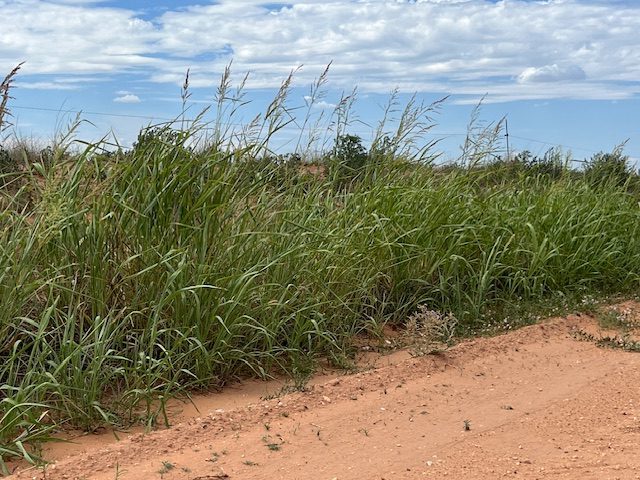
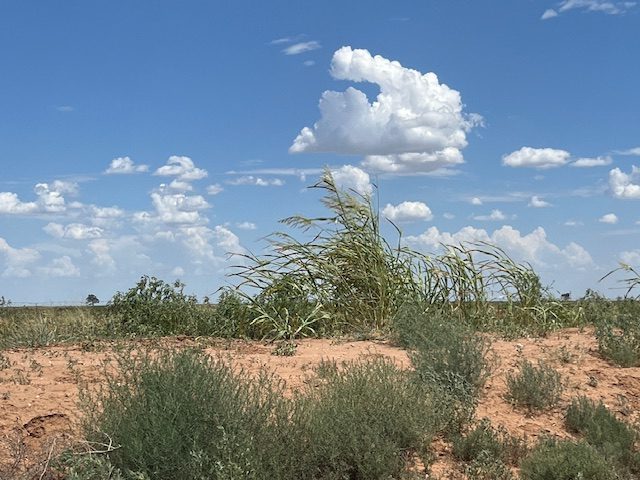
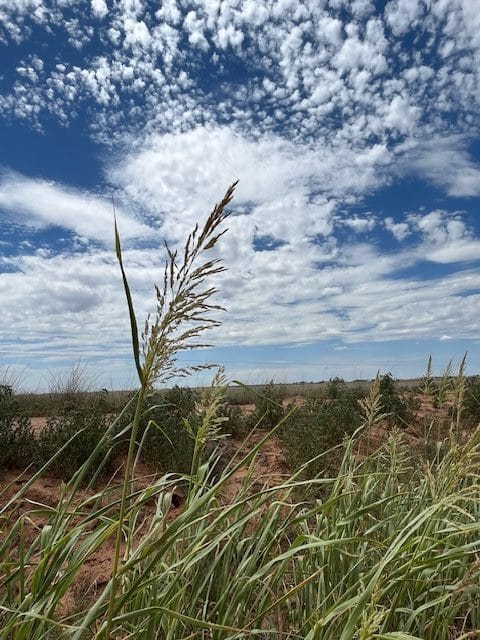
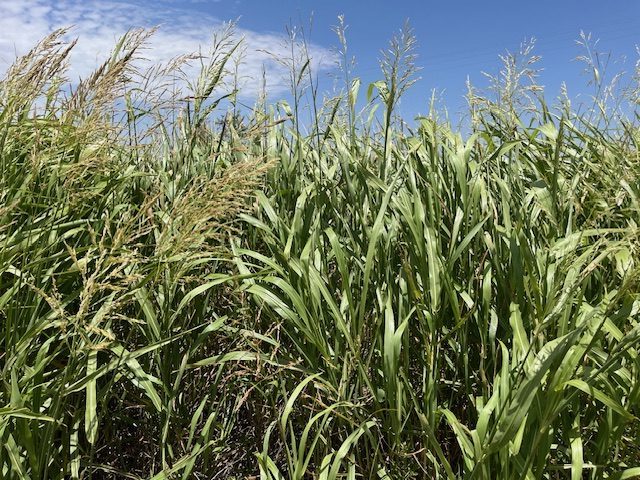
Love the opening. (So THAT’S how you came to write about Johnson grass.) Good story, too.